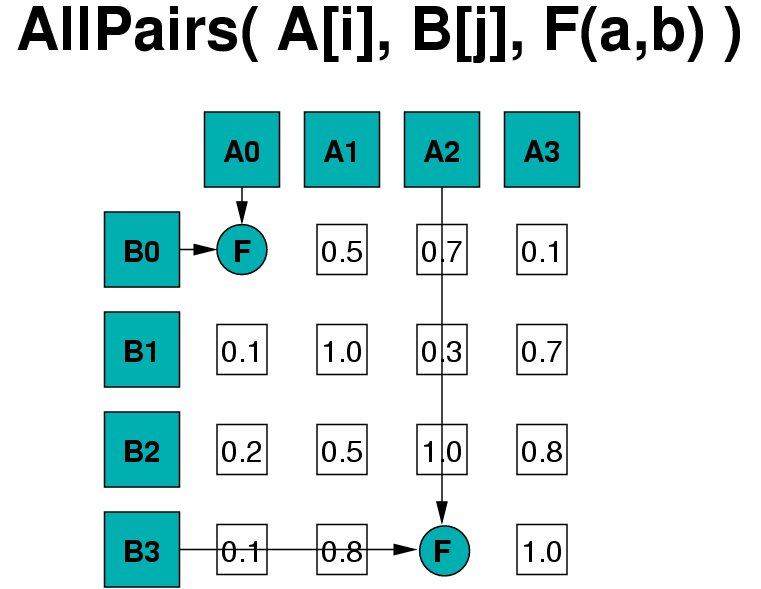Allpairs Crack License Key (Updated 2022)
- clopisrepsaukodi
- Jun 6, 2022
- 3 min read

Allpairs Crack With Registration Code [Win/Mac] You can use this program to find test cases to test a lot of variables in a configuration file. The basic approach is to try all combinations of variables. There are a few options that control how the algorithm works: -o gives an ordered listing of possible tests. For example, -o p10000 lists the first ten combinations. -o l10000 lists the last ten combinations. -o n gives a random selection of the first n tests from the whole list. -o count gives the number of tests that have been found so far. -s gives the length of a candidate test. It should be shorter than any of the candidate tests found so far, but not longer. When you execute the program, it will try to find a reasonable number of tests that cover a configuration file. If there are not enough tests found, it will print out how many there should have been and the number that actually were found. Usage: Allpairs [-o opk] [-s n] [-count] [-m] [-c] The options are as follows: -o Allpairs For PC Collect pairs of variables and values to use in testing. 77a5ca646e Allpairs Crack With Product Key Download Prints the following lines to standard output: The number of pairs, one per line. The number of expected test cases, one per pair. The number of tests run, one per pair. When an expected test case is not run, it appears as a # in the output. All pairs tests those combinations of variables, specified by the options --allpair and --count, that have a minimum number of test cases. Each test case corresponds to a set of two variables. The variables are specified by a comma-separated list of values. It is convenient to use the following options: --allpair=1 and --count=1000 The output is a file named pair1000.dat, containing the expected test cases. This output is useful if the test failures are to be emailed to the system administrator. Allpairs Options: --allpair=n This sets the minimum number of test cases for each pair. --count=n This sets the number of tests to be run for each pair. --failok=yes This makes the program believe there were no failures. It makes test reporting more convenient. --fidelities=yes This enables the program to report fidelities in addition to test counts. It is easy to make it all a bit prettier. Here's a script, allpairstest.pl, that will take a list of the variables, their minimum required value, and their maximum required value, and print it out as a text file. #!/usr/bin/perl use strict; use Time::Local; use Time::Local::Simple; my @vars = ( 'a', 1, 10, 100, 1000, 10000 ); my $min = shift @vars; my $max = shift @vars; my $output = join(" ", @vars); my $pattern = qr/^\d+\d+\d+\d+\d+\d+\d+\d+\d+\d+\d+\d+\d+\d+\d+\d+/; my $fids = []; my $start = 0; my $fail; my $time = Time::Local->now; # Tests for all values from $min to $max for every combination of every variable What's New In? #!/usr/bin/perl print "++i"; my $i; my $done = 0; my $end = 0; my $test_count = 1; my $end_count = 0; my $pairs = 0; my $perm = 0; my $failed_cases = 0; my $switches = 0; my $new_perm; my $count = 1; print "++". $test_count. " "; while ($count < 100) { my $comb = 0; my $test_num = 0; $i = 1; my $start = 1; while ($i < $test_count) { $test_num = $i; $i = $i+1; } for (my $j = $start; $j < $test_count; $j++) { $j = $j+1; for ($j = $start; $j < $test_count; $j++) { if ($j == $test_num) { $switches = 0; } else { $switches = 1; } if ($perm == 0) { if ($j!= $i && $switches == 1) { $perm = $new_perm; } } else { if ($perm!= $new_perm && $switches == 1) { $perm = $new_perm; } } if ($perm == 0) { if ($j!= $i && $switches == 0) { $perm = $new_perm; } } } if ($perm == 0) { $perm = $new_perm; $perm = $new_perm; } } } } $count = $count + 1; } if ($perm!= 0) { print "++n"; $switches = 0; $test_num = $end; $end = $end + 1; } if ($perm!= 0) { print "++e"; $switches = 0; $test_num = $end; $end = $end + 1; } if ($end System Requirements For Allpairs: Mac OS X 10.4.11, 10.5, 10.6, 10.7 or later Intel Macs with ATI Radeon graphics (starting with 7.1) A Mac with 512MB RAM and a hard drive space of at least 15 GB. (You can also use additional RAM to save memory) 1024x768 resolution or higher How to Play: X-Wing Starfighters is a simple space combat game. You and the computer fly your X-Wing Starfighter against one another in a battle
Related links:
https://jomshopi.com/30bd44cc13fa7a30ad813cde1638c46c0edaa38936cbedbaaec9e88888dcad22year30bd44cc13fa7a30ad813cde1638c46c0edaa38936cbedbaaec9e88888dcad22/30bd44cc13fa7a30ad813cde1638c46c0edaa38936cbedbaaec9e88888dcad22monthnum30bd44cc13fa7a30ad813cde1638c46c0edaa38936cbedbaaec9e88888dcad22/30bd44cc13fa7a30ad813cde1638c46c0edaa38936cbedbaaec9e88888dcad22day30bd44cc13fa7a30ad813cde1638c46c0edaa38936cbedbaaec9e88888dcad22/30bd44cc13fa7a30ad813cde1638c46c0edaa38936cbedbaaec9e88888dcad22postname30bd44cc13fa7a30ad813cde1638c46c0edaa38936cbedbaaec9e88888dcad22/
https://mytown247.com/wp-content/uploads/2022/06/Kurdish_Calendar.pdf
https://bryophyteportal.org/frullania/checklists/checklist.php?clid=9297


Comments